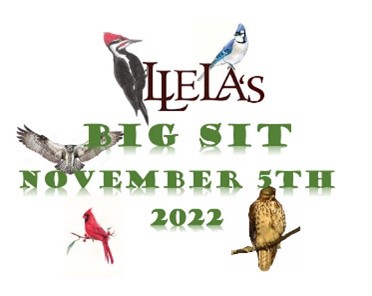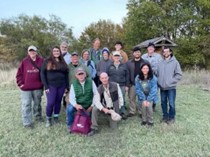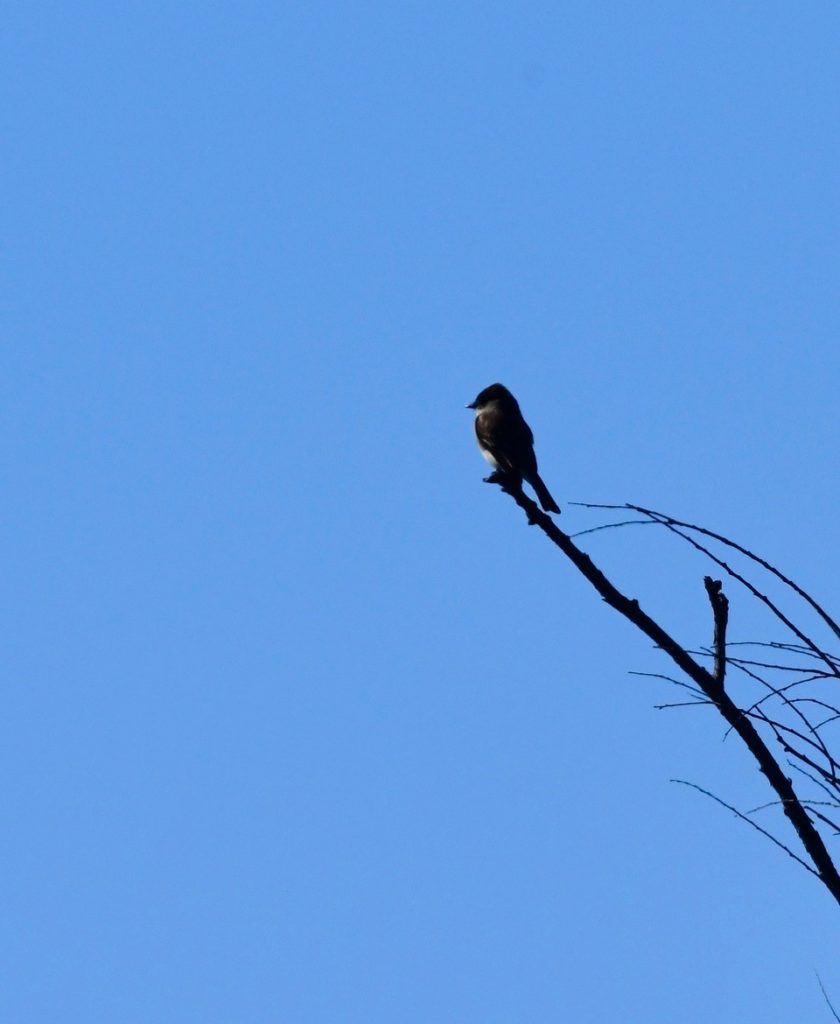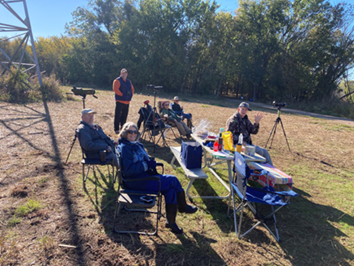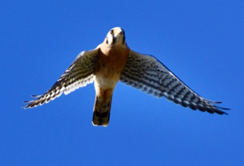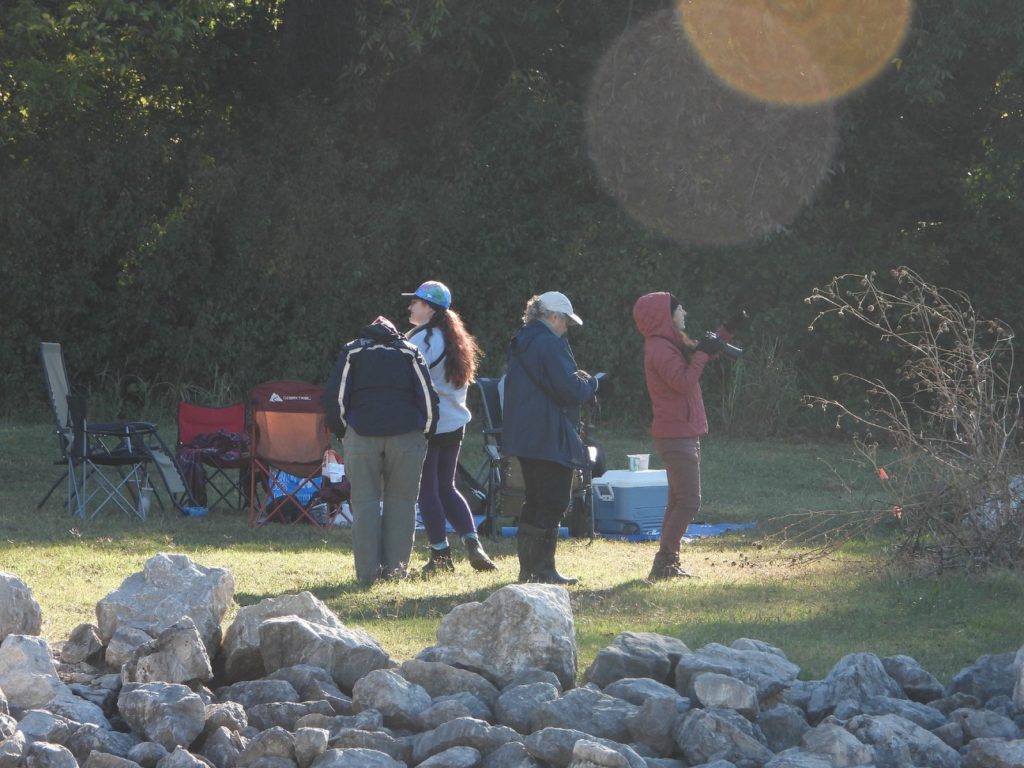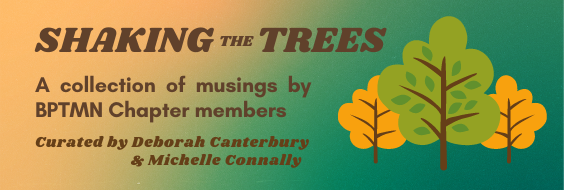Scott Kiester, Elm Fork Chapter and TMN Project Manager, Lewisville Lake Environment Learning Area
November 5, 2022 6 AM: On one of the first really chilly mornings of the fall intrepid birders from across the Metroplex gathered in the predawn hours at LLELA. Why? To count the birds of course.
Elm Fork TMN’s, Cross Timbers TMN’s, Clear Creek Natural Heritage Center and LLELA, each team had chosen a preferred spot, a 20’ circle painted on the ground, to spend the next 12 hours watching, listening and identifying every bird that came within range.
First owls hooted from the distance, unseen, but counted. Then as the Eastern sky began to lighten the dawn chorus filled the air with songs and calls, more species and numbers added to each team’s tally. Once the day began, the birds were on the move. Now binoculars and spotting scopes took their place alongside the sharp ears of the team members as they added to their totals. It was not just each species they counted, but each individual bird as well.
Early mornings are busy times for birds, they need to refuel, re-connect with their neighbors, and sometimes re-assert their ownership of winter-feeding territories.
As the day progresses it’s the birds overhead and on the horizon that garner the attention. While you may leave your circle to get a closer look or listen to that bird just beyond a good ID, it must first be seen or heard from within that 20-foot spot.
Midday, siesta time for many, but not all in the avian community. Raptors cruise the skies on the lookout for the unwary.
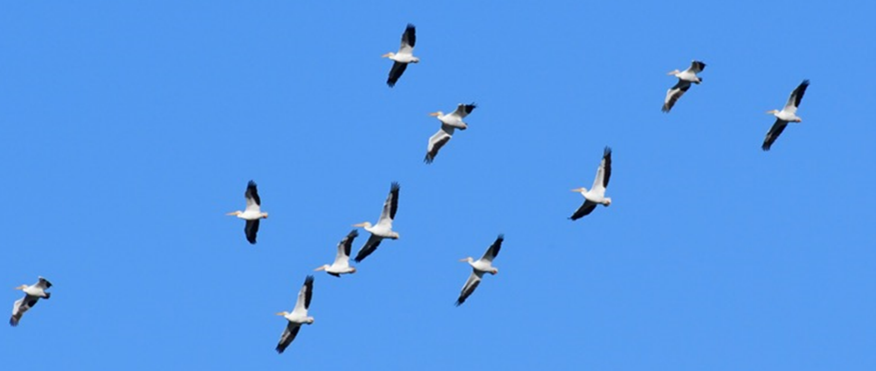
American White Pelicans soar overhead heading to the Trinity where they will land on the water just past the river outflow and float downstream scooping up fish that are temporarily stunned by the turbulent trip through the outflow tunnel. Only to fly back to the beginning when the current carries them past the first bend.
A slow birding moment, so the teams have the chance to eat lunch and assess the morning totals, but still keep watch. Often it is also when the team changes, members from the early crew head off and the afternoon shift arrives ready to take over.
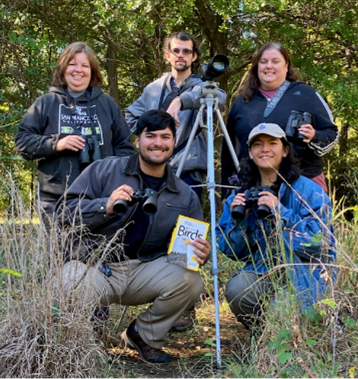
The afternoon brings more species as the birds move around among the trees and grass or come and go on the ponds and the river. Finally, it’s 6 PM, the sun drops to the Western horizon. The diurnal birds settle to roost after a last foraging round through their habitat. Deer and cottontails wander through the area, dawn and dusk is their time of day. Armadillos, raccoons, and opossums begin their nightly search for food. The owls are not yet active, and there is no sunset rush of migrant species heading off to fly in the calmer, safer night skies. LLELA’s summer visitors have long been gone on their southward journeys. The winter birds are here now, sparrows, ducks, kinglets, and the winter warblers. Everyone packs up chairs, coolers, and their birding gear to gather at the Cicada Pavilion for drinks, snacks and the final accounting. Eighty species and thousands of individual birds in all, submitted to the Cornell Ornithology Lab through eBird. A long day, but a fun one that gave some a chance to hone their skill and some to maybe show off theirs a little. The winning team had 58 species, but each team identified birds that weren’t seen by their competitors and all of them added to the knowledge of the bird life at LLELA.
The Final Species Tally:
| American Coot | American Crow | American Goldfinch | American Kestrel |
| American Robin | American White Pelican | American Wigeon | Bald Eagle |
| Barred Owl | Belted Kingfisher | Black Vulture | Blue Jay |
| Blue-winged Teal | Brown Creeper | Brown Thrasher | Canada Goose |
| Canvasback | Carolina Chickadee | Carolina Wren | Cooper’s Hawk |
| Common Grackle | dabbling duck sp. | Dark-eyed Junco | Double-crested Cormorant |
| Downy Woodpecker | Eastern Bluebird | Eastern Meadowlark | Eastern Phoebe |
| European Starling | Forster’s Tern | Franklin’s Gull | Gadwall |
| Green-winged Teal | Golden-crowned Kinglet | Great Blue Heron | Great Egret |
| Great Horned Owl | Greater Yellowlegs | Hairy Woodpecker | Hermit Thrush |
| House Finch | House Sparrow | House Wren | least Sandpiper |
| lesser yellowlegs | Lesser Scaup | Mallard | Mourning Dove |
| Neotropic Cormorant | Northern Cardinal | Northern Flicker (Red-shafted) | Northern Flicker (Yellow-shafted) |
| Northern Mockingbird | Northern pintail | Northern Shoveler | Orange-crowned Warbler |
| Osprey | Pied-billed Grebe | Redhead | Red-bellied Woodpecker |
| Red-shouldered Hawk | Red-tailed Hawk | Red-winged Blackbird | Ring-billed Gull |
| Ring-necked Duck | Ruby-crowned Kinglet | Sharp-shinned Hawk | Savannah Sparrow |
| Song Sparrow | Spotted Towhee | Swamp Sparrow | Tufted Titmouse |
| Turkey Vulture | Western meadowlark | White-crowned Sparrow | White-throated Sparrow |
| Winter Wren | Wood Duck | Yellow-bellied Sapsucker | Yellow-rumped Warbler (Myrtle) |
The Final Species Tally:



